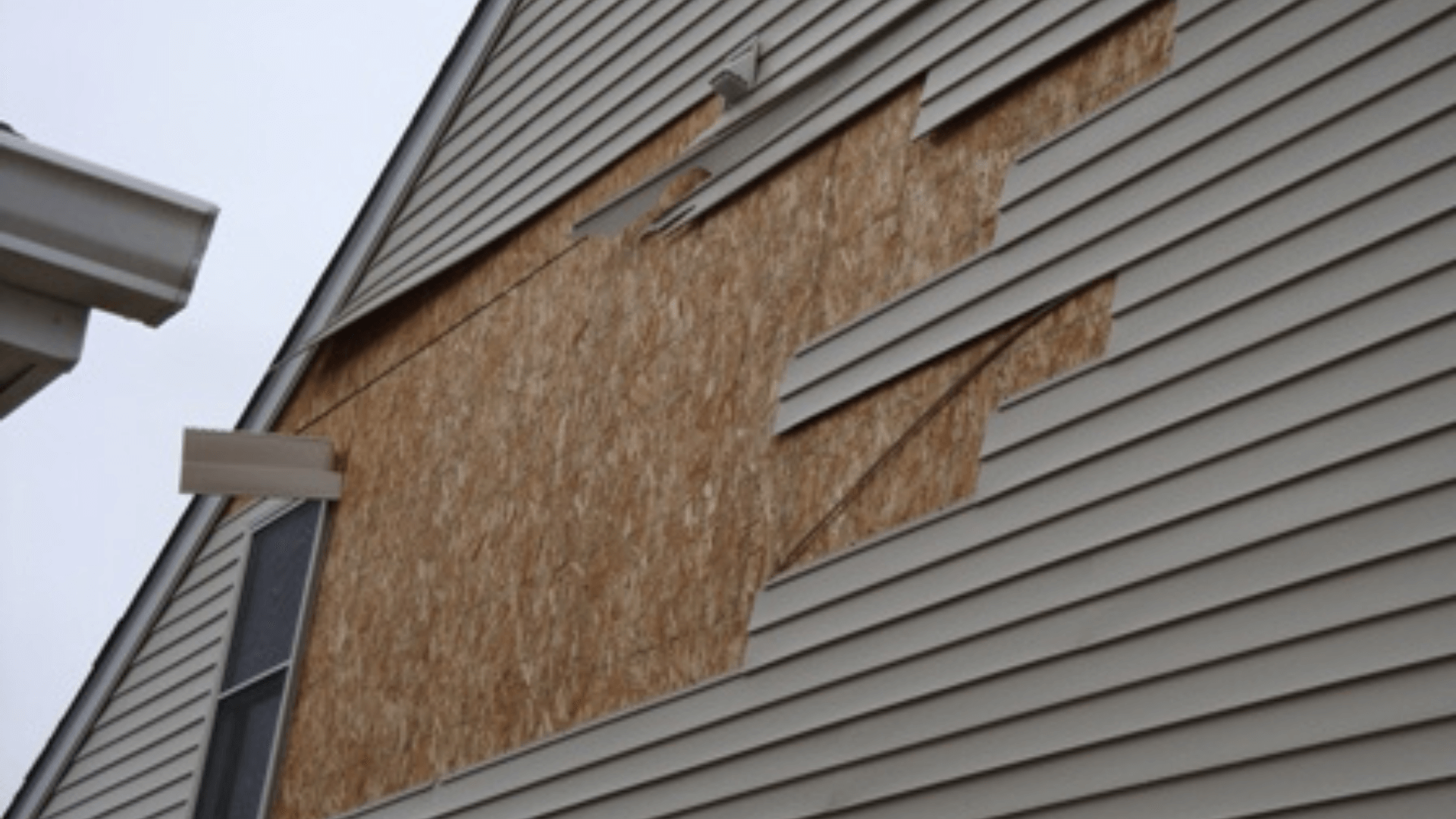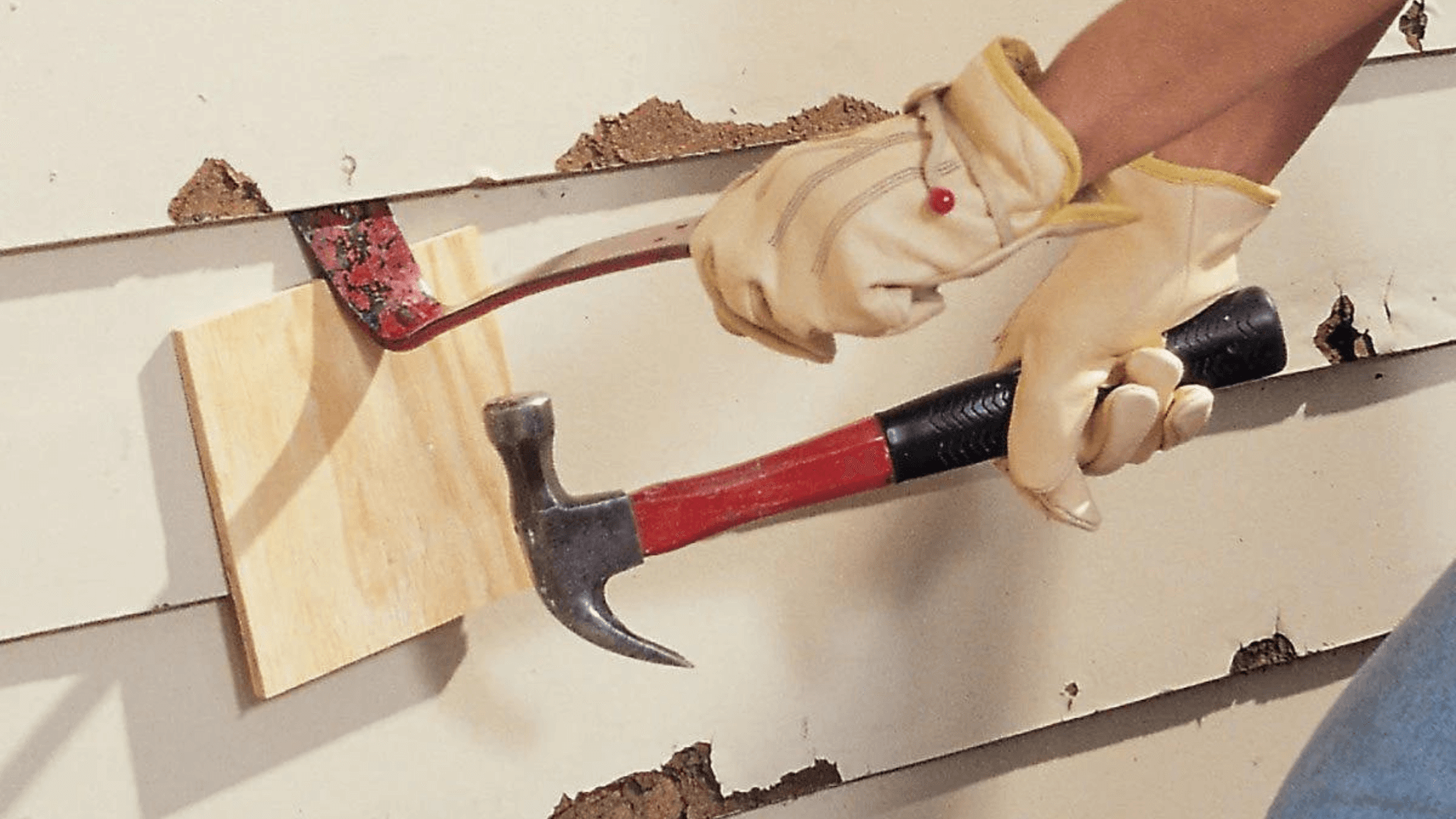How To Get Siding Replaced By Insurance
Siding replacement is vital to your home’s longevity and aesthetic appeal. However, the cost can be substantial. If you’re looking for ways to alleviate the financial strain, you need to know how to get siding replaced by insurance cover.
In this guide, Wolf River Construction will unravel the intricacies of navigating insurance claims for siding replacement. Be equipped with the knowledge to make all the difference in securing a beautiful, protected home.
Steps To Take If You Want To Use Homeowners Insurance For A Siding Replacement
Here’s a concise guide outlining essential steps if you want insurance to pay for siding replacement.
Assessing Siding Damage

Start by identifying the types of damage—whether it’s cracks, holes, warping, mold, or discoloration. Thoroughly document the damage with clear photographs and notes, showcasing the affected areas.
Be sure to capture the extent of the damage and its location around your home. You can seek a professional assessment from a siding expert or contractor.
Their evaluation will provide a comprehensive understanding of the repairs needed and avoid errors like mismatched siding, supporting your insurance claim with expert validation.
Understanding Insurance Coverage
Reviewing the policy in detail, understanding its clauses, and specifically focusing on sections related to property damage. Identify and distinguish the coverage on siding replacement and undamaged siding. Insurance companies only cover damage done by the specific perils as outlined in the policy.
Once you know your coverage, estimate the replacement cost for your siding. This involves assessing the type, quality, and amount of siding needed for an accurate replacement, helping you prepare for discussions with your insurer regarding the claim.
Contacting the Insurance Company
Now that you understand your insurance, the next step is contacting your insurance provider. Notify them of the siding damage promptly. Be prepared to provide necessary information such as policy details, date of damage, and a description of the incident.
The insurance company will guide you on filing a claim. Follow their instructions, providing all required documentation, including photographs and professional assessments.
Meeting with an Adjuster
After filing your claim, the insurance company will schedule an inspection with an adjuster. Be proactive in preparing for this meeting by documenting all the damage thoroughly. Make a list of damaged areas, corresponding photographs, and any professional assessments you have obtained.
During the adjuster’s visit, walk them through the damage, providing all necessary documentation. Ensure you are present during this inspection to answer questions and offer any additional information supporting your claim for siding replacement.
Reviewing the Adjuster's Report
Carefully analyze the assessment, comparing it with your documented damage. Ensure all damages are accurately noted. Confirm that the coverage aligns with your policy and that the payout is fair for the necessary siding replacement. If you find discrepancies or have concerns, address them with your insurance company.
Obtaining Estimates for Siding Replacement
Select reputable contractors like us, known for their reliability and quality work. Contact these contractors and request detailed quotes for the siding replacement. The quotes should provide a clear breakdown of costs, including materials and labor.
Once you have these detailed estimates, submit them to your insurance company. This will help the insurance company assess the accurate costs for the siding replacement and streamline the approval process.
Negotiating with the Insurance Company
Advocate for a fair value based on the estimates received and the extent of the damage. If required, provide additional information or clarification to support your case. Engage in a dialogue with the insurance company until both parties reach an agreement on the claim payout.
Approving the Claim and Starting Repairs

After successful negotiations, the insurance company will finalize the claim approval. Clarify the payment process to ensure a smooth transaction. Once approved, you can initiate the siding replacement project.
Coordinate with the a siding contractor to commence the necessary repairs, adhering to the agreed-upon scope and timeline. Keep the lines of communication open with the insurance company and the contractors throughout the siding repair process for a seamless siding replacement experience.
When Is Siding Not Covered Under My Homeowners Insurance?
Siding Degradation Over Time and Material Degradation
Homeowners insurance typically doesn’t cover siding that has naturally degraded over time due to aging or normal wear and tear. If the degradation results from the siding’s natural aging process or exposure to environmental elements over the years, the insurance won’t typically cover the repair or replacement costs.
Some policies exclude specific siding materials. For instance, if your policy covers wood siding, damages to aluminum siding might not be eligible for coverage.
Damage Due to Lack of Maintenance
Homeowners’ insurance may not cover repair or replacement costs if your siding has sustained damage because of a lack of proper maintenance or neglect.
Regular maintenance, such as cleaning, sealing, or painting, is essential to uphold the integrity of your siding, and failing to do so could invalidate your coverage for resulting damages.
Personal Responsibility for Repair Costs
If you are directly responsible for the damage to your siding, whether accidentally or due to negligence, your homeowners’ insurance will not cover the repair or replacement expenses.
It’s crucial to exercise caution and proper care to avoid causing any damage that you’ll be financially accountable for in terms of siding repairs or replacement.
Covered Perils In Your Policy That Could Cause Siding Damage
Vandalism and Malicious Mischief
Vandalism and malicious mischief involve intentional destruction or damage to your property. This could include graffiti, intentional scratching, or any deliberate harm caused by individuals.
When such acts affect your siding, your homeowner’s insurance covers the cost of repairs or replacement with new siding, offering financial assistance to restore your home.
Fire and Smoke
Accidental fires can cause significant damage to your home, including the siding. Whether a minor or a major fire, the heat, flames, and resulting smoke can affect and weaken the siding material.
Homeowner’s insurance covers repairing or replacing the damaged siding due to fire and smoke, helping you restore your home’s structure and appearance.
Severe Weather (Hail, Wind, Storms)
Severe weather events such as hailstorms, strong winds, or heavy storms can cause substantial damage to your siding. Hail can dent or crack siding, while strong winds rip it off.
Your homeowner’s insurance covers such damages, ensuring that the siding can be repaired or replaced to maintain your home’s structural integrity and aesthetics.
Wrap Up
Obtaining insurance coverage for siding replacement requires awareness of policy details, thorough documentation, effective communication, and collaboration with professionals. Remember, being informed and proactive enhances your ability to navigate insurance procedures successfully.
By understanding the nuances of your policy and presenting a strong case with professional guidance, you can ensure a smooth and efficient siding replacement process, minimizing stress and achieving the best outcome for your home’s restoration.
Stay informed, communicate effectively, and make the most of your insurance coverage when considering siding replacement.

FAQs
A siding damage insurance claim involves assessing the damage, documenting it, and contacting your insurance company. An adjuster inspects and estimates repair costs. If your policy covers, the insurance pays for the repair or replacement minus deductible.
Yes, siding damage caused by covered perils like severe weather or vandalism is typically covered by homeowners insurance. However, gradual degradation or lack of maintenance is usually not covered.
Yes, homeowners insurance generally covers melted siding if the cause is a covered peril, such as a fire. However, the coverage is subject to your policy’s specifics and the melting’s cause.
Matching coverage in home insurance ensures that damaged parts are replaced with materials that match the undamaged parts, maintaining uniformity in appearance. If it is a sider replacement, a matching siding is used to match the entire house. After a covered loss, this helps restore your property’s aesthetic and structural integrity.

